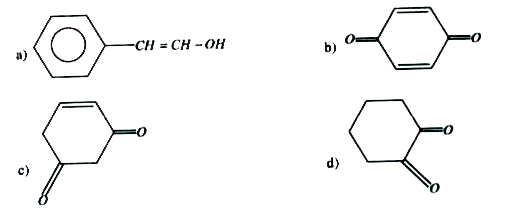The energy required for the following process is 1.96×104kJmol−1
Lig→3e−+Li3+(g)
If the first ionisation energy of lithium is 520kJmol−1, what is the second ionisation energy? Solution in Telugu
Step by step video & image solution for The energy required for the following process is 1.96 xx 10^4 kJ mol^(-1) Li_(g) to 3e^(-) + Li_((g))^(3+) If the first ionisation energy of lithium is 520 kJ mol^(-1), what is the second ionisation energy? by Chemistry experts to help you in doubts & scoring excellent marks in Class 11 exams.
Updated on:21/07/2023Topper's Solved these Questions
- PERIODIC CLASSIFICATIONBOOK - AAKASH SERIESCHAPTER - PERIODIC CLASSIFICATIONEXERCISE - SUBJECTIVE EXERCISE - 3 (LONG ANSWER QUESTIONS)
2 Videos
- PERIODIC CLASSIFICATIONBOOK - AAKASH SERIESCHAPTER - PERIODIC CLASSIFICATIONEXERCISE - SUBJECTIVE EXERCISE - 3 (SHORT ANSWER QUESTIONS)
9 Videos
- PERIODIC CLASSIFICATIONBOOK - AAKASH SERIESCHAPTER - PERIODIC CLASSIFICATIONEXERCISE - SUBJECTIVE EXERCISE - 2 (SHORT ANSWER QUESTIONS)
13 Videos
- ISOMERISM BOOK - AAKASH SERIESCHAPTER - ISOMERISM EXERCISE - ADDITIONAL PRACTICE EXERCISE ( PRACTICE SHEET (ADVANCED) INTEGER TYPE QUESTIONS)
10 Videos
- PERIODIC PROPERTIESBOOK - AAKASH SERIESCHAPTER - PERIODIC PROPERTIESEXERCISE - LEVEL-II (TYPE -II) (PRACTICE SHEET -3 (SUBJECTIVE/ ANALYTICAL TYPE QUESTIONS ))
8 Videos
Similar Questions
What is electronegativity? How is this useful in understanding the nature of elements?
View SolutionClassify the elements on the basis of their oxides.
View SolutionAs atomic number increases, atomic size increases in a group and decreases along a period . Give reasons for this behaviour.
View SolutionTautomerism is exhibited by X number of compounds among the following. What is X.

View SolutionWhat is the valency possible to Arsenic with respect to oxygen and hydrogen?
View SolutionThe energy needed for Li_(g) rarr Li_(g)^(3+) + 3e is 1. 96 xx 10^4 kJ mol ^(-1) . If the first ionisation energy of Li is 520 k J mol^(-1) . Calcuate the second ionisation energy of Li . (Given : IE_1 for H = 2 . 2. 18 xx 10^(-18) k J "atom"^(-1) ).
View SolutionThe first IP lithium is 5.41eV and electron gain enthalpy of Cl is −3.61eV . Calculate ΔH in KJmol−1 for the reaction:
Lig+Clg→Li=g+Cl−g.
View SolutionFirst and second Ionisation energies of Mg are 740 and 1450 KJ/mol . If 1 g of Mg(g) absorbed 50 KJ energy will be no. of moles of Mg^(+) in the formed mixture is 'x' then 100x value is
View SolutionWhat is the DeltaH of the following affinity. Mg_(g)+2F_(g) rarr Mg_((g))^(2+)+2F_((g))^(-) . If the electron affinity of F_(g) = -328 kJ " mol"^(-1) and first ionisation energy of Mg = 737.7kJ " mol"^(-1) and second ionisation energy of Mg = 1451kJ " mol"^(-1)
View SolutionThe ionisation enthalpy of lithium is 520 kJ*mol^(-1) . The amount of energy required to convert 210 mg of Li-atoms is gaseous state into Li^(+) ions is-
View SolutionFirst and second ionisation energies of Mg(g) are 740 and 1450kJmol−1. Calculate percentage of Mg+(g)andMg2+(g), if 1 g of Mg(g) absorbs 50 kJ of energy.
View SolutionThe first of lithium is 5.41 eV and electron affinity of Cl is -3.61 eV . Calculate Delta H in kJ mol^(-1) for the reaction: Li_(g) + Cl_(g) rarr Li_(g)^(+) + Cl_(g)^(-) .
View SolutionThe energy needed for the following process is
Li(g)→Li3+(g)+3e−
If the first ionization energy of lithium is 520 kJ mol−1, calculate the second ionization energy of lithium, that is the energy required for the process.
Li+(g)→Li2+(g)+e−
View SolutionThe energy needed for Li_((g))to Li_((g))^(+3)+3e^(-) is 1.96xx10^(4)"KJ mole"^(-1) . If the first ionisation energy of Li is 520 KJ "mole"^(-1) calculate second ionisation energy for Li. Given IE_(1) for H = 2.18xx10^(-18)"J atom"^(-1)
View SolutionThe first ionisation energy for Li is 5.4eV and electron affinity of Cl is 3.61 eV. The ΔH (in kJ/mol) for the reaction, Li(g)+Cl(g)→Li+(g)+Cl+(g)
If the resulting ions do not combine with each other is (1eV=1.6×10−19J)
View Solution
